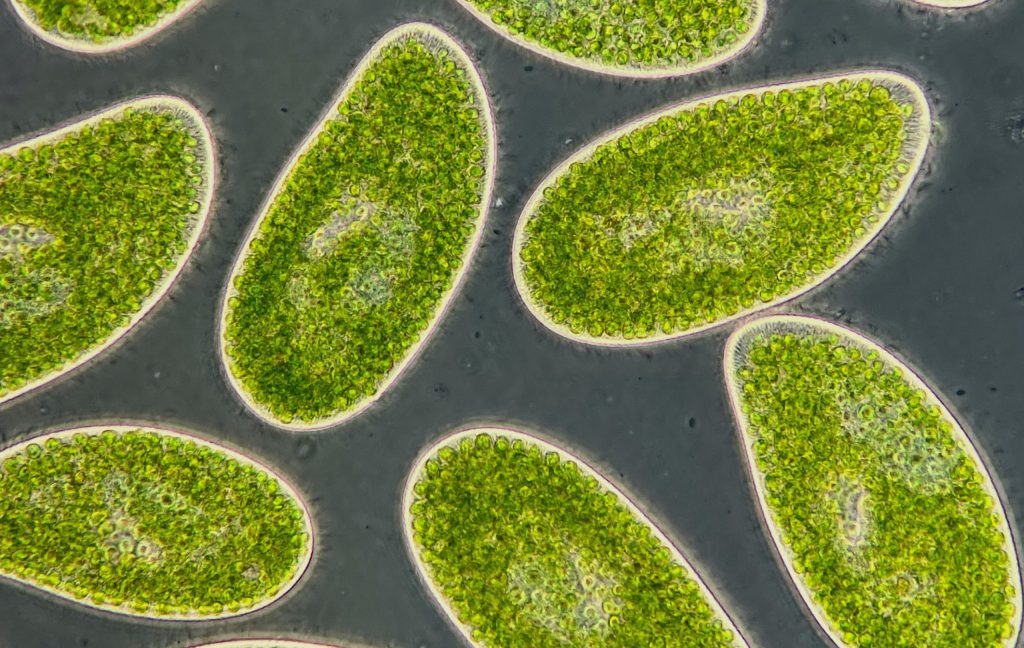Microbes called anaerobic methanotrophic archaea form communities with sulfate reducing bacteria. These communities can consume methane in anaerobic environments. This research found that biological processes in these microbial communities can create silica deposits that appear to entomb the communities.
Tag: Microbial Ecology

Rising Sea Levels Could Lead to More Methane Emitted from Wetlands
A Bay Area wetlands ecosystem that was expected to serve as a carbon sink is emitting surprisingly high levels of methane, a potent greenhouse gas.
Using Different Flours for Sourdough Fosters Different Bacteria – and Flavors
A new study of the microbial ecosystem in sourdough finds that using different types of flour fosters distinct bacterial communities, and that these differences contribute to the variation of sourdough aromas and flavors.
Novel Metric Examines the Role of Organic Matter and Microbes in Ecological Communities
Individual features in a community, like microbes or types of chemicals, affect the overall community’s development and help determine the similarity of different communities over time and space. Scientists developed a novel ecological metric, called βNTIfeat, that helps to investigate the roles of different features in community development. The resulting information can inform models of how ecosystems respond to disturbances such as climate change.

Soil microbes help plants cope with drought, but not how scientists thought
In a multi-generation experiment, researchers from the College of Agricultural, Consumer and Environmental Sciences (ACES) found microbes helped plants cope with drought, but not in response to plants’ cries for help. Instead, the environment itself selected for drought-tolerant microbes. And while those hardy microbes were doing their thing, they just happened to make plants more drought-tolerant, too.

Warming climate could turn ocean plankton microbes into carbon emitters
New research finds that a warming climate could flip globally abundant microbial communities from carbon sinks to carbon emitters, potentially triggering climate change tipping points.
Predicting Changes in Microbial Food Webs
Increasing temperature or nutrients in an ecosystem can destabilize food webs, but when temperature and nutrients increase together it can be difficult to predict the combined effects. This study examined a laboratory microbial food web consisting of bacterial prey and protist predators. It found that temperature and nutrients can alter the dynamics of microbial communities by changing how species’ abundances and average body sizes relate to each other.
UNLV Study Sheds Light on Ancient Microbial Dark Matter
Omnitrophota are nano-sized bacteria first discovered 25 years ago. Though common in many environments around the world, until now they’ve been poorly understood. An international research team produced the first large-scale analysis of Omnitrophota genomes, uncovering new details about their biology and behavior. The team’s findings are reported in the March 16 issue of the journal Nature Microbiology.
Metal Contamination Causes Metabolic Stress in Environmental Bacteria
Most studies on the effects of heavy metals on bacteria living in these environments have only focused on one metal at a time. In this study, researchers found that exposing bacteria to a mixture of metals caused their metabolism to change and led them to act as if they were starved for iron.
Having good friendships may make for a healthier gut microbiome
Social connections are essential for good health and wellbeing in social animals, such as ourselves and other primates.
Watching Plant Roots Grow in a Transparent Simulated Soil
The rhizosphere, the underground ecological zone between and around plant roots, is difficult to study. Scientists have now developed a rhizosphere-on-a-chip with a transparent simulated soil structure that allows researchers to view how roots grow over time through the pores in the soil. Paired with specialized mass spectrometry techniques, scientist can also use the rhizosphere-on-a-chip to map the location of root-exuded molecules, like amino acids, without hurting the plant.
WHOI scientists receive 2022 Simons Early Career Investigator in Marine Microbial Ecology and Evolution Awards
Two Woods Hole Oceanographic Institution scientists have received prestigious Simons Early Career Investigator in Marine Microbial Ecology and Evolution Awards.
Meet the forest microbes that can survive megafires
New UC Riverside research shows fungi and bacteria able to survive redwood tanoak forest megafires are microbial “cousins” that often increase in abundance after feeling the flames.